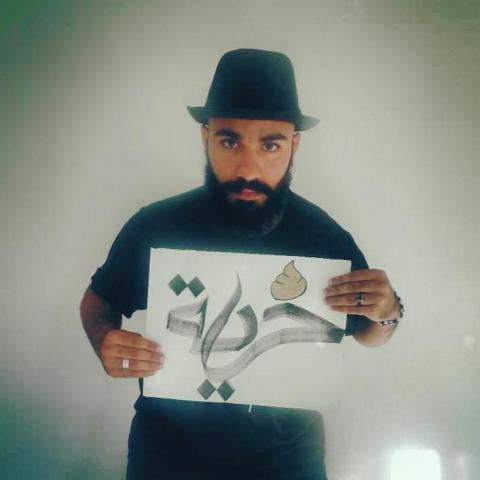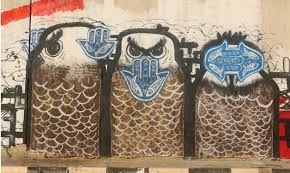Aimen Ajhani, aka Elbohly, was born in Misrata, Libya in 1989. He is a self-taught graffiti artist who started off as an underground artist in Tripoli, Libya where he first began spraying protestor images. The images were related to and inspired by the February 2011 Revolution in Libya where armed forces sought to oust the Muammar Gaddafi administration. In a lot of ways, his work serves as the voice of the Libyan youth and their political struggle. He seeks to keep the artistic political-resistance movement that began in Tripoli when he was a boy alive in the whole of Libya using his work. This is a way of claiming his freedom of expression and giving his generation a chance to have even the most innocent of aspirations in their country.
Aimen Ajhani, Libya

Emboldened by the energy of the Revolution, Ajhani’s first official graffiti was the word Libya painted on a wall on 1st September Street, now 24th December Street, in Tripoli. This was followed by his most original signature stencil of Fatima’s Hand that basically sticks up the middle finger at the repressive regime and the ‘Owl’ that appears to ironically state Hear No Evil, See No Evil, Speak No Evil.

Ajhani was a part of a small organisation during the Revolution called Art of Expression. The group participated in dance events where artists would perform their work in order to raise funds for families who had lost their loved ones in the war. He also took part in a graffiti project called Flame of the Capital which was against domestic violence which was on the rise during the Revolution. A lot of hip-hop artists such as MC Sweat, MC Squad, and MC Black Tiger have filmed their music videos in front of walls which feature his Ajhani’s work which further promoted the involvement of the youth in the state of politics in their county.
Ajhani is widely known as Elbhohly in the art scene in Libya. This name means ‘the crazy one’ and he feels it was suitable because he did his art knowing National Security would always be on his tail which is crazy but at the possibility of freedom it was worth it.
He has participated in the Life Story Mural exhibition at the Museum of Immigrant in Copenhagen, Denmark. He has also done the Hafla on the Square exhibition for the Shubbak Festival in London, England. Most recently he has had his solo exhibition at the Rich Mix in London. His other exhibitions include those at home in Libya such as the Human Rights Festival as well as one of the same name in Tunis, Tunisia.



